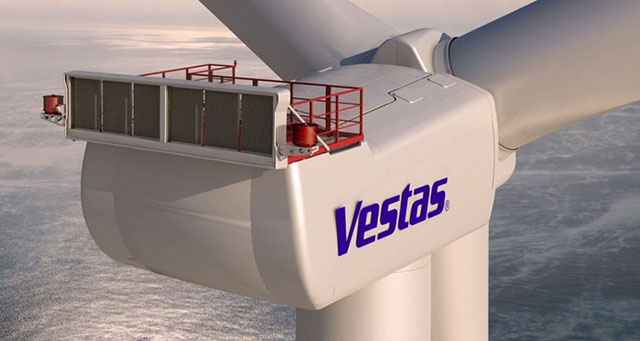As the renewables sector continues to grow, Vestas’ is upholding its vision to become the global leader in sustainable energy solutions. Establishing a sustainable organisation, capable of achieving longevity amidst a rapidly evolving energy landscape is key to fulfilling this vision. Now, Vestas will become the first wind energy manufacturer to set long-term safety targets, as well as ambitious goals for building a more inclusive and diverse workplace.
As a first step towards achieving its ambitions within safety, Vestas is committing to reduce the rate of total recordable injuries to 1.5 per million working hours by 2025, and to 0.6 by 2030. A marked reduction from achieving 4 total recordable injuries per million working hours in 2018, this new target will represent an average reduction of 15 percent year on year by 2030.
“Safety has always been our number one priority at Vestas”, said Bo Kokholm Pedersen, Vice President, Quality, Safety & Environment. “However, if we are to continue to be a spearhead of the energy transition, we must be more ambitious in our approach to safety than any other supplier in the renewable energy sector. I am incredibly proud that we are accelerating our journey along this path by becoming the only wind energy manufacturer to set bold, long-term targets within safety”.
To meet these targets,Vestas will be introducing several new initiatives. As a first step, manufacturing processes will be reevaluated to improve ergonomics and automation. In addition, pilot projects leveraging predictive analytics and augmented reality will be introduced to improve construction and service site safety. Furthermore, Vestas will introduce a safety by design approach to all areas of its value chain, whereby an increased focus on safety will be implemented across manufacturing, installation and decommissioning of turbines.
Global employment in the renewable energy sector is set to grow significantly, from a reported 11 million jobs in 2018 to a predicted 42 million in 2050.1 As Vestas continues to occupy a leadership position in the sector, the potential for growth demands a strengthening of internal policies that support the well-being of its employees.
“At Vestas, we believe a lack of diversity is a loss of talent. Younger generations gravitate towards companies that align with their own purpose-driven values. To remain attractive, we must prove that we share these values”, said Marika Fredriksson, Chief Financial Officer at Vestas. “At Vestas, we view the energy transition as an opportunity to change diversity-related barriers in the workplace. It is our duty as a leader in sustainable energy to ensure that the energy transition benefits everyone, not just the few”.
“As a global organisation comprised of 100 nationalities, and operations spanning 58 countries, we must ensure that Vestas’ workforce reflects the societies within which we operate”, said Kerstin Knapp, Executive Vice President of People and Culture at Vestas. “2020 marks the launch of Vestas incorporating sustainability into everything we do and building a truly diverse and inclusive workplace is key to deliver on this commitment, and to achieve our vision of becoming the global leader in sustainable energy solutions”.
Vestas will be increasing its focus on diversity and inclusion going forwards, and directly addressing gender disparities as a first step. Gender diversity is a pressing issue in the wind industry, with 65 percent of women in wind found to perceive gender-related barriers at work, in comparison to 34 percent of men.2 Vestas is committing to prevent this issue from proliferating as the wind industry grows. As part of the increased focus on diversity and inclusion, it is a first step committing to increasing the number of females in leadership positions to 25 percent by 2025, and 30 percent by 2030.
Among the initiatives to fulfill these targets, Vestas will undergo an external audit of pay equity this year. In addition, it will be expanding its female role models campaign to create more awareness of the opportunities available to women within the company, and to inspire new perspectives on gender roles.
Vestas will also introduce initiatives to support inclusion beyond the gender disparity. Initiatives to assess and eliminate bias in recruitment processes will be introduced, including the implementation of a tool to enable more inclusive job advertisements, by highlighting language that may be hostile towards gender identities, cultures or nationalities. In the next two years, Vestas will be further developing its policies to facilitate inclusion to target more diverse perspectives beyond gender.


